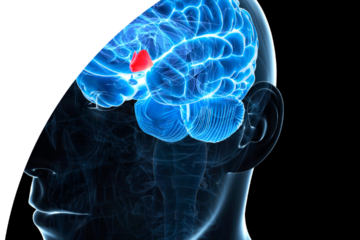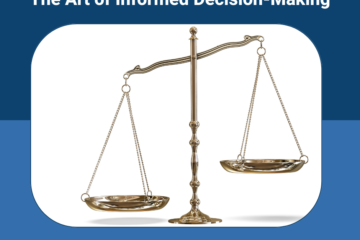
Introduction:
Problems are a part of both our personal and work lives, and how well we solve them can have a big effect on our success. Problem-solving skills can make a big difference in your job, whether you’re a manager, an employee, or a business owner. In this blog post, we’ll talk about the most important steps of problem-solving, how to use tools to describe problems correctly, how to understand complicated issues, and how to solve problems in a good way.
Understanding Problem Solving
Problem-solving is a methodical way to deal with problems, find answers, and make choices. It’s a useful skill in both personal and business situations because it helps people and groups get past problems and reach their goals.
Key Points
Problem-solving is an important part of work every day, and there are many different kinds of problems to deal with.
A good way to solve problems leads to methods that work quickly and well.
When people don’t know how to solve problems well, it can cause problems and slow down progress.
Defining the Problem
The first step in fixing a problem is to describe it clearly. Instead of focusing on the symptoms, it is important to find the reason. There are a few tools that can help with this:
Tools for Problem Definition
5 Whys:
The “5 Whys” method is a simple but effective way to get to the bottom of a problem and find out what caused it. It includes asking “why” more than once (usually five times) to find out more about what’s going on behind the scenes. By asking “why” over and over, you can get past the signs and surface problems to get to the root of the problem. This method helps you find a more complete and long-lasting answer to a problem instead of just focusing on the obvious parts.
Example:
Problem: The project was delayed.
1st Why: Why did the job take longer than planned? – Because the team didn’t finish its work on time.
2nd Why: Why didn’t the team finish their jobs on time? Because they already had too many other things to do.
3rd Why: Why did they have too many other things to do? Because the department didn’t have enough workers.
4th: Why did the department have too few workers? Because a lot of workers were out sick.
5th Why did several workers take sick days? Because there was a flu epidemic at work.
In this case, the “5 Whys” method shows that the flu spread, which led to employee absences, was at the heart of the project delay.
Appreciation (Appreciative Inquiry):
Appreciative Inquiry is a way to solve problems that is good and builds on people’s strengths. Instead of focusing on the problems themselves, this method looks at what is going well in the organization or the problem area. Teams can work together to find answers by recognizing and building on the strengths and things that are already working.
This method creates an environment that is more positive and collaborative. It encourages stakeholders to share their wins and best practices, which can lead to new ways to solve problems. It helps people have a more positive outlook on life and pushes them to think creatively and resourcefully when they face problems.
Example:
Let’s say that a company has bad morale and a lot of people leaving. Instead of focusing on the problems, Appreciative Inquiry would have workers talk about the good things that have happened to them and what keeps them going. By focusing on these things, the company can come up with ways to make employees more engaged and keep them around.
Root Cause Analysis:
Root Cause Analysis (RCA) is a method that uses a set of steps to find the reason of a problem at its core. The goal of Root Cause Analysis (RCA) is to find the main cause of a problem, not just the obvious or instant causes. By figuring out the problem’s root cause, organizations can use targeted methods to stop it from happening again.
RCA includes a planned investigation, an analysis of the data, and ways to solve problems. It often uses flowcharts, fishbone diagrams, and statistical methods to find the cause of a problem. This method is often used to improve processes and cut down on mistakes in fields like healthcare, manufacturing, and engineering.
Example:
Imagine that a manufacturing business keeps making products that aren’t up to par. Root Cause Analysis would look at the whole production process, analyze the data from each step, and figure out where the problems are coming from. It could show that a specific machine problem is causing the flaws, so the company could fix the problem right away.
By using these tools to define a problem, people and groups can learn more about the problems they face and come up with more effective and long-lasting solutions. These techniques can be powerful tools for solving problems. They can help people make better decisions and get better results generally.
Understanding Complexity
Some problems are hard and need a more structured way of looking at them to fully understand how all the parts fit together. Visualization tools can help break down the complexity of:
Tools for Understanding Complexity
Affinity Diagrams:
Affinity diagrams are a way to organize a lot of information, ideas, or facts into meaningful groups or themes. They are a visual tool. They are especially helpful when solving complicated problems with a lot of factors or variables. The process starts with brainstorming, in which people come up with thoughts or pieces of information about the problem. Then, each idea is put down on a sticky note. Once all of the ideas have been written down, the team starts putting them into groups based on what they have in common. This helps figure out how the different parts fit together and gives a clear picture of how the problem is put together as a whole.
Example:
Imagine that a group of people are coming up with ways to make customers happier in a restaurant. They come up with ideas like better customer service, more choices on the menu, faster food preparation, and a nicer atmosphere. Using an affinity diagram, they can group ideas that are related, such as customer service and how the food is made in one group, menu variety and atmosphere in another, etc. This helps the team understand the different things that affect customer happiness and decide how to prioritize their work.
Cause-and-Effect Diagrams:
Cause-and-effect diagrams, also called fishbone diagrams or Ishikawa diagrams, are used to find the possible reasons and effects of a problem. The structure of the diagram looks like a fishbone, where the “head” is the problem and the “bones” are possible reasons that are grouped into different branches. By coming up with ideas and talking about them, the team learns more about what might be causing the problem.
Example:
Think about what would happen if a website went down a lot. The cause-and-effect diagram could show things like computer problems, bandwidth issues, software bugs, or too much traffic. Also, each branch can be broken down into more specific reasons, which helps the team figure out why the website is down in the first place.
Flow Chart, Swim Lane Diagram, and Systems Diagram:
Flow charts, swim lane diagrams, and systems diagrams are all ways to show complicated processes, workflows, or systems in a visible way. Flow charts use symbols and arrows to show the order of steps in a process, while swim lane diagrams split the process among different stakeholders or departments. Systems images show how the different parts of a system work together and how they relate to each other.
Example:
In a manufacturing setting, a flow chart can show the steps of how raw materials are turned into finished goods. A swim lane diagram can show how departments like procurement, production, quality control, etc. fit into the general workflow by giving each step of a process to one of those departments. Systems diagrams can show how the different parts of a manufacturing system are connected to each other. This can help find possible bottlenecks or places to improve.
Drill Down:
Drilling down is a way to solve problems by breaking them down into smaller, more doable parts. By breaking the problem into smaller parts, teams can focus on solving each part on its own, which leads to more effective and focused solutions.
Example:
Let’s say a business is seeing a drop in sales. The team doesn’t have to try to solve the whole problem at once. Instead, they can use the drill-down method to find out what factors are causing the drop. This could mean looking at sales data for different goods, areas, or types of customers. By knowing what the problems are, the team can come up with specific plans to boost sales in each group.
By using these tools to understand complexity, teams can get a full picture of complicated problems and make good choices about how to solve them. By using visual tools and breaking down complicated problems, organizations can better handle problems and get the most out of their efforts to solve them.
Problem-Solving Processes
Even though the four-step method is useful in many cases, there are other ways to solve problems that have more detailed steps:
Problem-Solving Techniques
Simplex:
Simplex is an eight-step process for solving problems that gives a structured way to deal with complicated problems and find good answers. Each stage is an important step on the way to fixing a problem. Here are the steps of the Simplex process:
a. Finding the problem:
Figuring out what the problem is and how to describe it. At this point, you have to figure out what the problem is and how big it is.
b. Collecting facts:
Getting information and data that are important to the problem. This step makes sure that decisions are made based on correct and trustworthy information.
c. Defining the Problem:
Making the problem statement clear and to the point. Here, the goal is to find the reason of the problem, not just its symptoms.
d. Coming up with ideas:
Coming up with possible answers to the problem. This stage pushes people to come up with ideas and think creatively in order to look at a wide range of options.
e. Choosing and judging:
Judging the ideas that have been formed and choosing the best ones. The team looks at each option to see if it can be done, how it will affect things, and if it fits with the goals.
f. Planning:
Making a detailed plan for how to put the chosen answer into action. This means figuring out what needs to be done, when, who is responsible for what, and what tools are needed.
g. Selling the Idea:
Getting the right people to agree with and back the chosen solution. At this time, it’s important to communicate and persuade well.
h. Taking action:
Putting the plan into action and using the chosen answer. Monitoring and evaluating are very important to make sure that the answer put in place works.
Appreciative Inquiry:
Appreciative Inquiry is a positive way to solve problems that focuses on the good things about a situation or group. Instead of focusing on the problems or problems-to-be-solved, this method helps people see and appreciate their strengths and successes. Teams can find new ways to solve problems and improve general performance by looking at what is going well and building on that.
In Appreciative Inquiry, stakeholders share their positive experiences, successes, and best ways to deal with the problem or the organization in a set of guided interviews or conversations. Through this process, people learn about what makes them successful, which can help them come up with plans for dealing with present problems.
Soft Systems Methodology (SSM):
Soft Systems Methodology (SSM) is a way to solve problems that is meant to deal with complex and unstructured problems, especially those that involve how people interact and what they think. It takes into account that not all problems can be easily described in a structured way and that there may be more than one way to look at a problem.
There are four steps of exploration in SSM:
a. Unstructured Problem Situation:
Understanding the problem’s background and figuring out the different points of view of the people involved.
b. Expressing the Problem:
Defining the problem situation with rich pictures or conceptual models that show the different points of view of the parties.
c. Coming up with Possible Changes:
Making a list of possible changes or improvements to solve the problem based on the ideas and models that have been shared.
d. Comparing with the Real World:
Evaluating and comparing the possible changes with the constraints and limits of the real world to find answers that are both possible and desirable.
By using the Soft Systems Methodology, teams can understand complicated problems better and come up with solutions that are more whole and relevant to the situation.
These ways of solving problems are structured and positive. They help teams look at problems from different points of view, think about what has worked in the past, and find good answers that will lead to better results.
Conclusion:
Getting better at solving problems is important for your personal and career growth. By using tried-and-true tools, understanding complexity, and adopting all-around problem-solving strategies, you can become better at overcoming problems and build an image as a wise and positive problem solver.
FAQs
1. What are the most important steps to fixing a problem?
The most important steps in solving a problem are to correctly define the problem, understand how hard it is, and use different methods for solving problems.
2. Why is it important to be able to solve problems in both your personal and work life?
Problem-solving is important because it helps people and groups get past problems and reach their goals, whether in their personal lives or in work.
3. Which method is best for fixing problems that are hard to understand?
Soft Systems Methodology (SSM) is a way to understand complicated problems and figure out what to do to fix them.



0 Comments